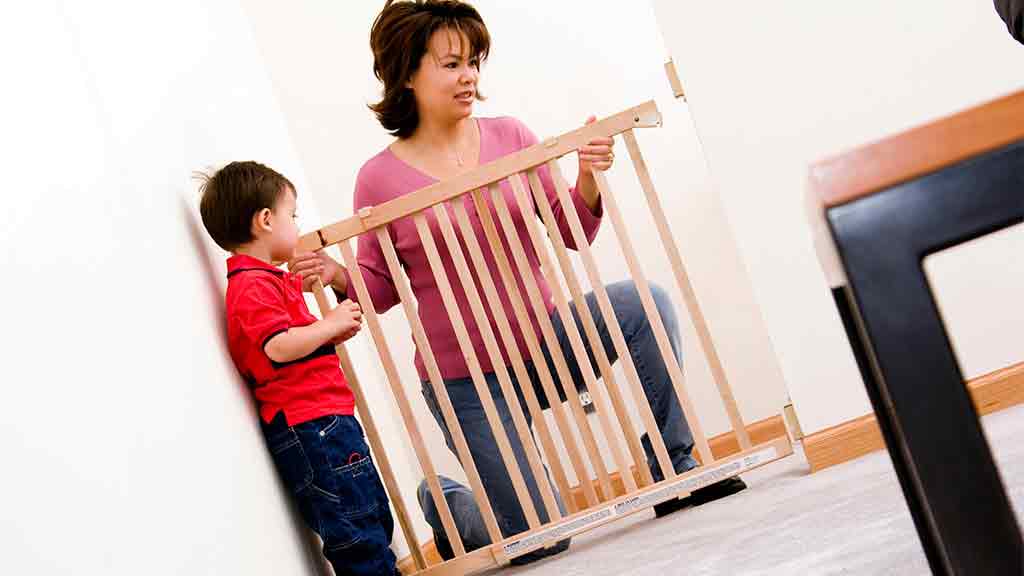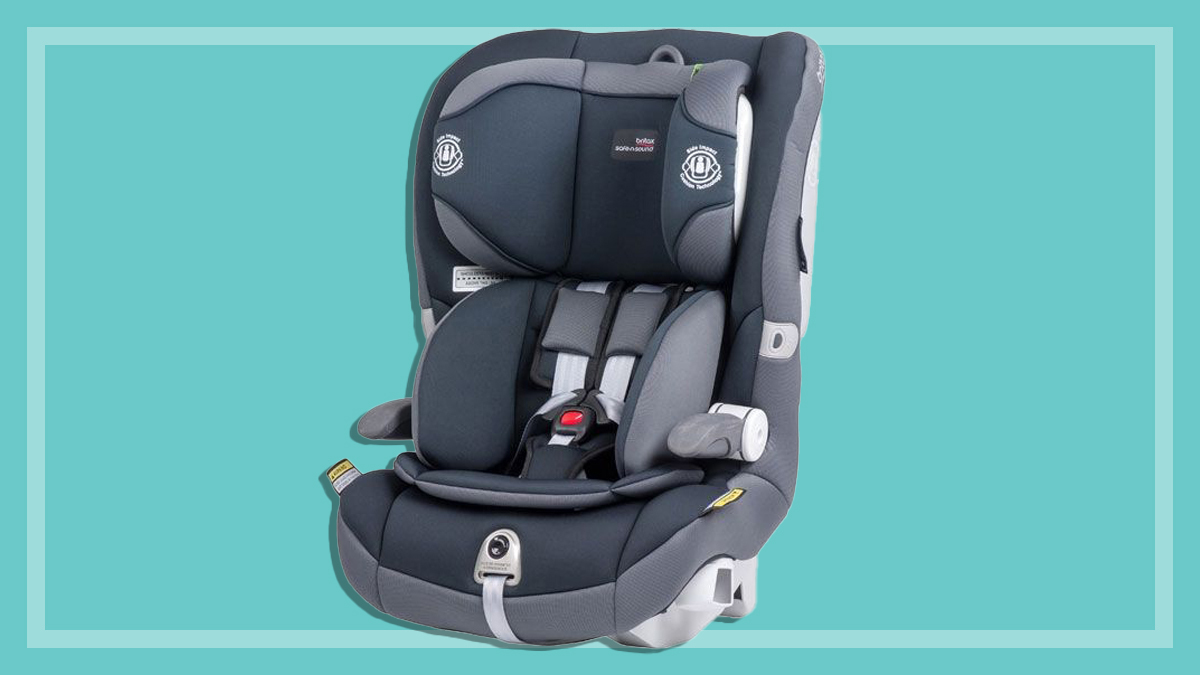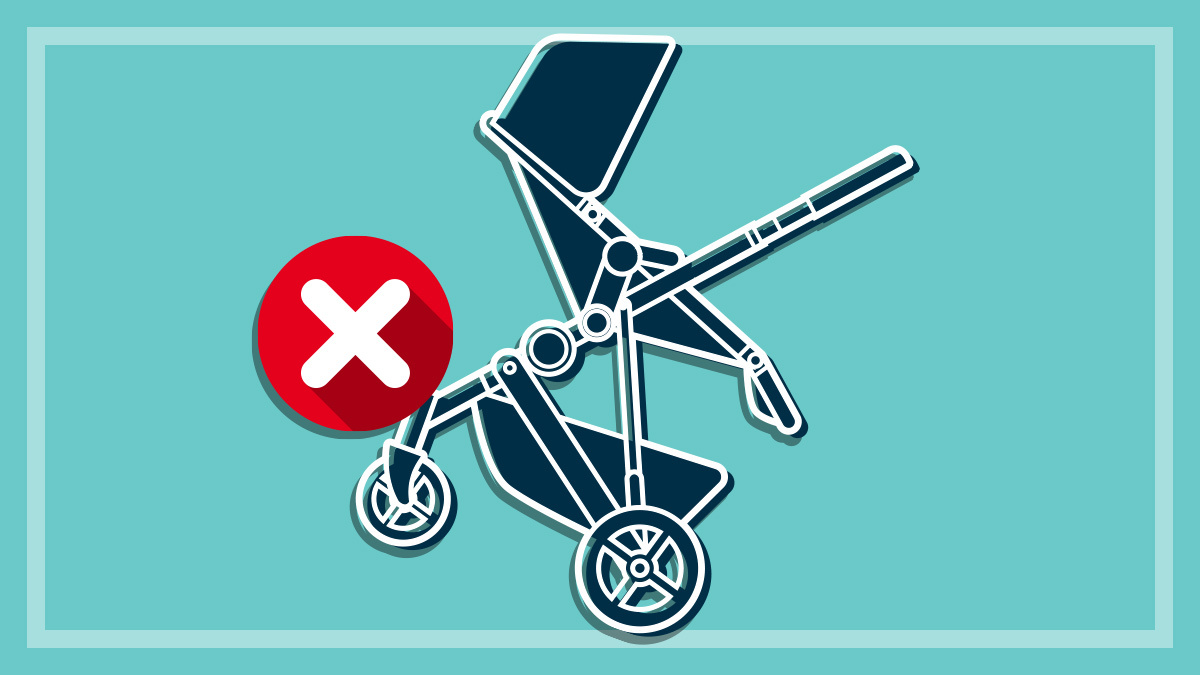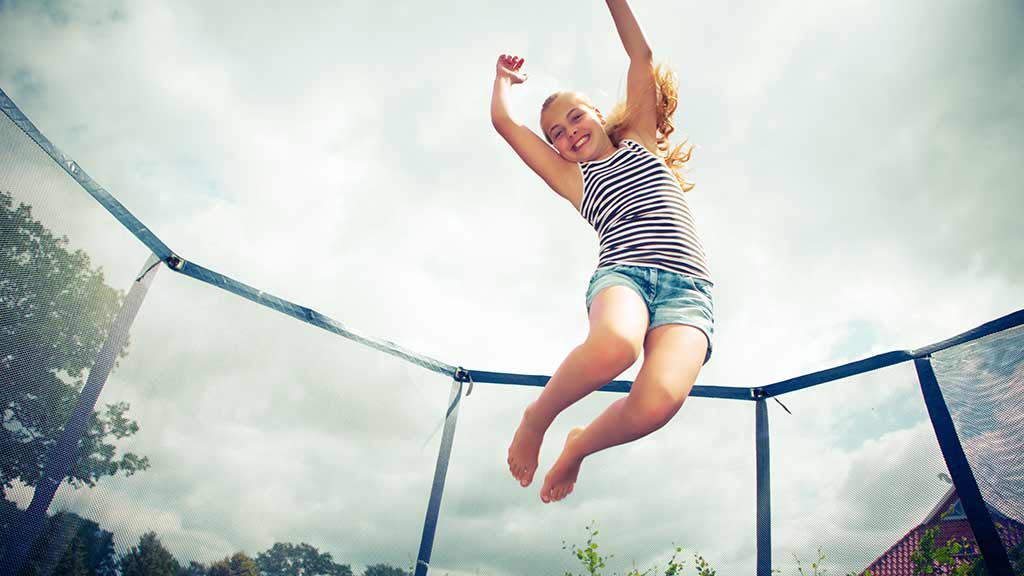Get our independent lab tests, expert reviews and honest advice.
How to buy the best safety gates and barriers

Toddlers can be shockingly quick and curious when they want to be – so you’ll need to block off access to stairs and any other areas of the house that contain hazards, such as the kitchen, bathroom, garage or fireplace. This is where safety gates and barriers can come in handy, keeping dangerous areas out of reach and keeping your child out of harm’s way.
On this page:
Barrier or gate?
Barriers are a basic, fixed device that keeps bub where they need to be, and tend to be a cheaper option. However, remember that you’ll need to step over or remove it to get access to the closed-off area, which can be both tricky when child wrangling and a safety concern for the adults in the house! Gates swing open and closed and are more convenient when you need frequent access to the closed-off area, but may cost more.
If you want to block off half a room and there’s no doorframe available, you may want to choose a playpen consisting of several panels (including a safety gate) that can double as a room divider/barrier. However, make sure you buy one which is specifically designed for this purpose as it will include the necessary wall mounts.
What to look for
Standard certification
There are two international standards for safety gates: the European EN 1930 and the American ASTM F1004. As there isn’t currently an Australian standard, certification to these standards is a good starting point.
Pressure mounts vs hardware mounts
Gates and barriers are often fixed to the doorway by pressure mounts, which screw out from the gate frame and hold the gate in position by pressure alone. Make sure these tighten firmly enough to hold the gate securely in place. Pressure mounts are easy to install, and usually sit inside wall cups which stick onto the door frame or wall using adhesive. For added security, wall cups can usually be bolted or screwed directly into the wall or doorframe. This is a more permanent hardware solution for riskier areas, such as the tops of stairways, where it is not advisable to use a pressure-mounted gate.
Some styles of safety gates, such as retractable designs, don’t use pressure mounts and instead require you to screw a mount directly to the frame or wall.
Latches
Gate latches should be easily operated by an adult, but impossible for a toddler. Gates should require two separate actions to open, such as unlocking and lifting. The gate should close easily (some have an auto-close mechanism) and it should be clear whether the latch has engaged properly, with an audible or visible indicator. Children have fallen down stairs in cases where a latch has not properly engaged. Ideally, you should be able to operate the gate with one hand, so you can get through easily while carrying your child or that giant basket of washing, for example. Some gates have a convenient foot pedal.
Adjustable width
Most gates or barriers will fit a range of door widths, but some are more adjustable than others. Their mountings usually extend a few centimetres, which allows for fine adjustment. A larger adjustment will need an extension kit, which are only available for some models. Some barriers and gates have sliding or extending sections that can be adjusted to a large range of doorways.
Gaps
Gaps between bars should be between 50mm-95mm to ensure your child’s head can’t fit through or get stuck. Any accessible smaller gaps should be between 12mm-30mm (to avoid hands or feet getting caught) or less than 5mm (to avoid trapping little fingers). Check the bars (or mesh) are rigid, so that a child can’t force gaps wider than the recommended dimensions. Our CHOICE tests look for these hazards.
Footholds
There should be no horizontal bars – they could be used for climbing.
Material
Gates and barriers can be made of metal, wood, plastic or mesh. Choosing one type over another is mostly a matter of personal preference.
Pet access
An extra tall gate is also useful for keeping out pets (which can often jump a standard height gate), and a catflap can be handy to allow your feline friend to come and go while still keeping your child on the safe side of the gate.
And pet owners rejoice: once bub grows out of it, you can always use the gate or barrier for your resident canine.
Floor bars
Many baby gates have will a floor bar as part of their construction, which could be a trip hazard when walking through the gate, particularly if its profile is too high. If you are placing one at the top of the stairs, consider one with no floor bar at all (usually a retractable type) or one with a lower profile and chamfered edges.
Beware the criss-cross accordion gates
Baby gates and barriers are meant to stop toddlers falling down stairs but this older-type gate, which opens criss-cross like an accordion, can trap a child’s head or clothes, and is too easy to climb. Overseas they’ve caused major injuries and deaths.





